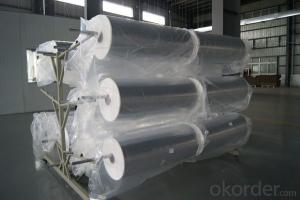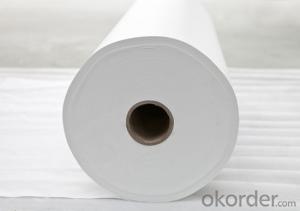Dirk Aluminum Foil Plate
Dirk Aluminum Foil Plate Related Searches
Led Light Bulbs For Ceiling Fixtures Led Lamps For Ceiling 42 In Ceiling Fan With Light Aluminum Coil Stock For Gutters Aluminum Foil For The Grill Hole Saw For Aluminum Plate Aluminum Tread Plate For Trailer Bow Plate For Aluminum Boat Aluminum Foil For Grow Room Aluminum Foil For Joint PainHot Searches
Stock Price For Aluminum Aluminum Coil Stock For Sale Aluminum Gutter Coil For Sale Used Aluminum Scaffolding For Sale 1/4 Aluminum Plate For Sale Aluminum Bar Stock For Sale Aluminum Round Stock For Sale Aluminum Diamond Plate For Sale Aluminum Scaffolding For Sale Craigslist 6061 Aluminum Plate For Sale Aluminum Dock Plate For Sale 7075 Aluminum Plate For Sale Aluminum Tread Plate For Sale Aluminum Checker Plate For Sale Aluminum Plate For Sale Near Me Plate Aluminum For Sale Aluminum Plate For Sale Aluminum Square Stock For Sale Aluminum Flat Stock For Sale Billet Aluminum Stock For SaleDirk Aluminum Foil Plate Supplier & Manufacturer from China
Okorder.com is a professional Dirk Aluminum Foil Plate supplier & manufacturer, offers integrated one-stop services including real-time quoting and online cargo tracking. We are funded by CNBM Group, a Fortune 500 enterprise and the largest Dirk Aluminum Foil Plate firm in China.Hot Products
FAQ
- What will affect the performance of the aluminum ingot in the process of casting?
- In our daily industrial raw materials called aluminum ingot, according to the national standard (GB/T1196-2008) should be called "remelting with aluminum ingot", but we are used to "aluminum ingot"". It is with the alumina cryolite produced by electrolysis.
- what kind of aluminum sheet is suitable for aluminum alloy double-edged saw?
- saw web size depends on the thickness and height of sectional material,equipment compatibility and permitted installed saw web size .
- which kind of enterprises are aluminium sheet circles used in?
- user use cold squezz method to transform the aluminum sheet circle into various standard capacitor shell, aluminium collapsible tube shell, which are broadly used in electron industry, daily chemical industry, medicine, education and automobile products,electrical appliance, heat preservation, machine manufacturing, automobile,spaceflight,military industry,mould, construction, printing and other industries.
- There are several methods of joining aluminum sheets without welding. 1. Adhesive bonding: This method involves using an adhesive to bond two aluminum sheets together. The adhesive creates a strong and durable bond, and it can be applied in various ways such as tapes, liquid adhesives, or films. Adhesive bonding is a popular choice as it provides a clean and aesthetically pleasing finish. 2. Mechanical fastening: This method involves using mechanical fasteners such as screws, rivets, or bolts to join aluminum sheets together. These fasteners provide a strong and reliable connection and are commonly used in industries where disassembly or repair is required. Mechanical fastening is also relatively easy to implement and does not require any additional equipment. 3. Clinching: Clinching is a cold-forming process that involves joining aluminum sheets by using a punch and die to create a strong interlock between them. This method is suitable for thin aluminum sheets and offers good mechanical strength. Clinching is a cost-effective alternative to welding, as it does not require any additional materials or heat. 4. Friction stir welding: Although not technically welding, friction stir welding is a solid-state joining process that uses a rotating tool to generate frictional heat between the aluminum sheets. As the tool moves along the joint, it creates a plasticized region that is then consolidated to form a strong bond. Friction stir welding is mainly used for joining thicker aluminum sheets and offers excellent mechanical properties. 5. Folded joints: This method involves folding the edges of two aluminum sheets together to create a joint. The folded joint can be secured by using adhesives, mechanical fasteners, or a combination of both. Folded joints provide good strength and stiffness, and they are commonly used in applications where a seamless appearance is desired. These methods offer various advantages and can be chosen based on the specific requirements of the project, including the desired strength, appearance, and ease of implementation.
- There are several bending techniques for aluminum sheets, including air bending, bottom bending, coining, and wipe bending.
- There are several types of surface treatments available for architectural aluminum sheets, including anodizing, powder coating, and PVDF coating. Anodizing involves creating a protective oxide layer on the surface of the aluminum, providing enhanced corrosion resistance and durability. Powder coating involves applying a dry powder to the surface of the aluminum and then curing it with heat, resulting in a durable and decorative finish. PVDF coating, also known as Kynar coating, is a type of liquid coating that provides excellent weather resistance and color retention. These surface treatments can enhance the appearance and performance of architectural aluminum sheets for various applications.
- Aluminum sheets are manufactured through a process called rolling, where aluminum billets are heated and passed through a series of rolling mills to reduce their thickness. The billets are first heated to a specific temperature and then rolled multiple times, with each pass reducing the thickness of the sheet until the desired gauge is achieved. The process also involves annealing, where the sheets are heat-treated to improve their strength and flexibility. Finally, the sheets are cut to the desired length and width before being packaged for distribution.














































